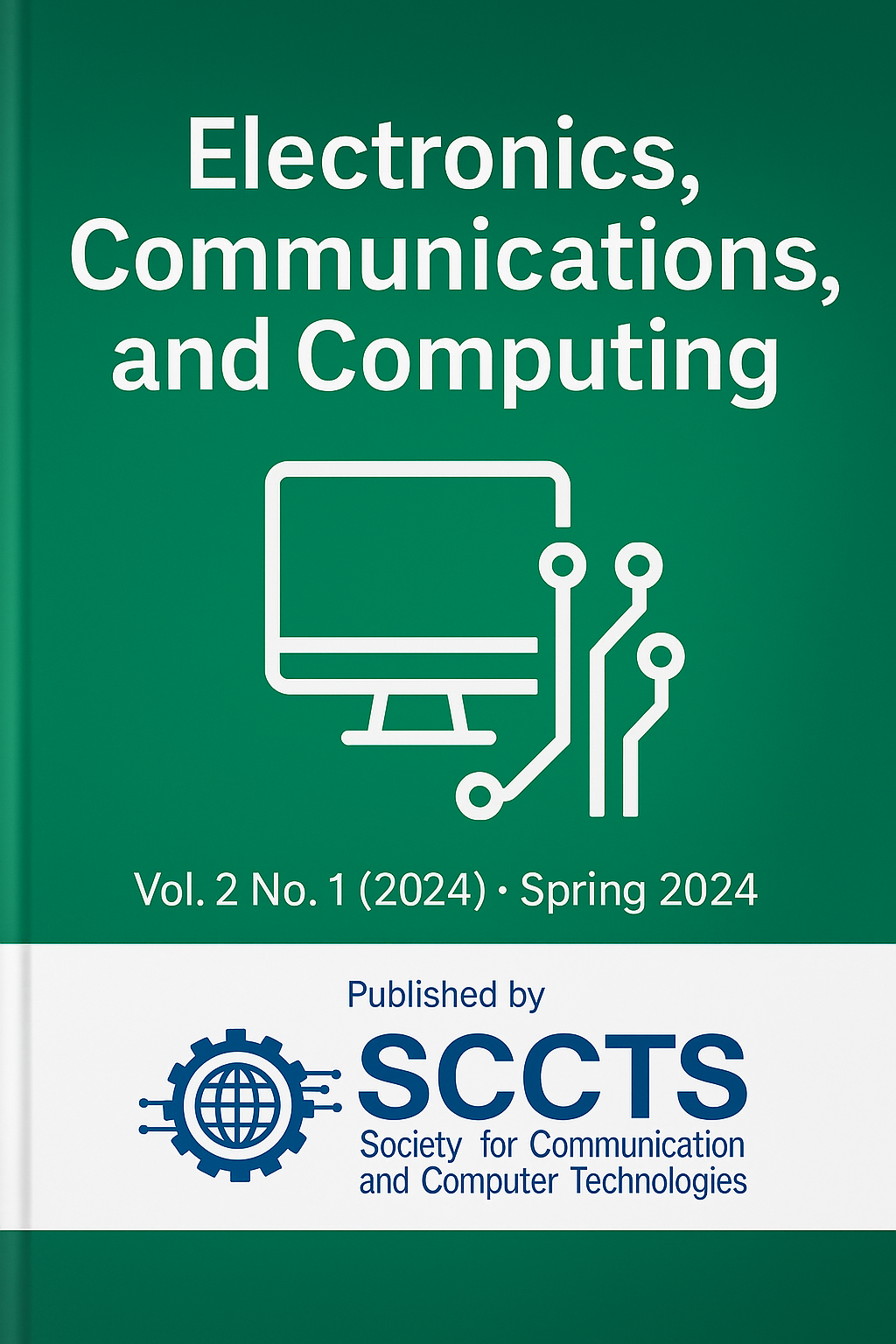High-Efficiency Power Amplifier Design for Next-Gen Electronics Applications and IoT Devices
Keywords:
Class-E Power Amplifier, Energy Efficiency, CMOS 180nm, IoT Devices, Sub-GHz ISM Band, Power Added EfficiencyAbstract
With the recent ramp up in Internet of Things (IoT) devices alongside the next-generation embedded electronics applications, there has been an ever-increasing need of the energy-efficient and high-performance radio frequency (RF) front-end products and especially power amplifiers (PAs). Traditional linear PA topologies (Class-A, Class-AB) are not effective at low power (battery) environments and, therefore, are not useful within the contemporary IoT applications. This paper describes the simulation and design along with validation of an ultralow power (<1mW) high-efficiency Class-E power amplifier optimized to sub-GHz ISM bands (433 MHz and 868 MHz), aimed at ultra-low-power wireless communication applications. The amplifier is in 180nm CMOS technology and has an ideal architecture that supports the use of multistage impedance matching, optimal gate biasing, and adaptive load modulation to enhance energy conversion and thermal stability.The Class-E design makes use of either switch-mode oscillating operation to realize near-zero voltage switching (ZVS) and hence it exhibits low transition losses. Harmonic and load-pull studies were carried out in detail to maximise Power Added Efficiency (PAE) and output power with a view of supporting spectral compliance. It was designed using simulation in schematic level and full post layout simulations with extracted parasitics stating that the peak PAE is 72.3 per cent, output power, +18.1 dBm, and gain, 20.2 dB. Linearity measurements indicate adherence with standards like LoRa and GFSK, Error Vector Magnitude, (EVM) less than 3.5 percent and OIP3 of +25.6 dBm. The appropriate amount of layout area of 0.47 mm 2 and the availability of junction temperature control below 80 C further testify to its confidence in the thermally limited, battery-operated IoT-type nodes and wearable electronics. It not only solves some of the critical problems in energy efficiency, linearity as well as physical integration, but it is also scalable with lower cost than the incumbent technology to transmit RF signal in next generation electronic systems.



